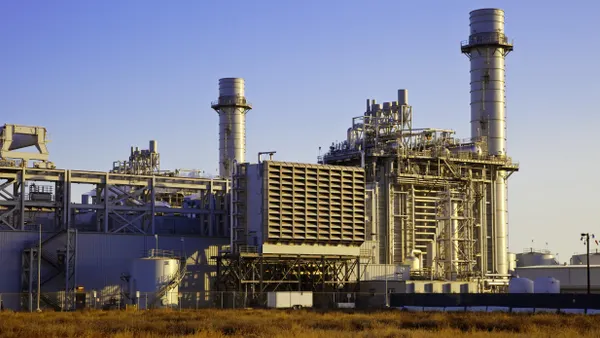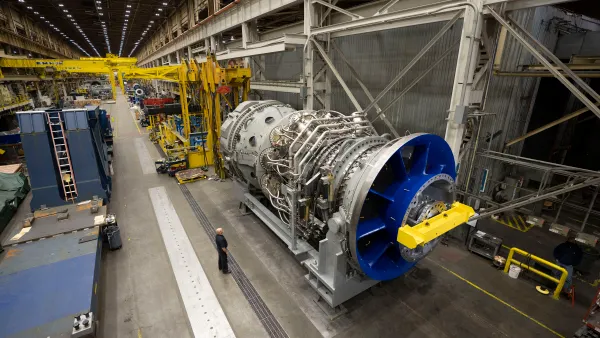The economy is rapidly shifting to one where a big factor limiting growth is the availability of electrical power.
Driven by AI, the US will consume more electricity to process data in 2030 than it will to manufacture all energy-intensive goods combined, including aluminum, steel, cement and chemicals, according to a recent report from the International Energy Agency.
If data centers cannot get the power they need, their growth will be stifled — and rate payers will revolt if they are asked to bear the cost of the utility upgrades needed to serve those data centers.
Utilities are recognizing that the centralized grid approach to generating and distributing power, which has reigned for a century, isn’t always the most effective way to provide quick time-to-power. Thus, it is no surprise that utilities are increasingly turning to onsite or distributed power solutions which can be installed fast and supplement grid power.
Among the host of approaches, solid oxide fuel cells (SOFCs) represent a proven, flexible, scalable technology that empowers utilities to deliver clean, resilient power quickly, when and where it's needed most, often deployable in months versus years.
For energy leaders confronting mounting capacity constraints and growing interconnection queues, SOFCs represent not just a response, but a strategic advantage.
How fuel cells work
A fuel cell is an electrochemical device that generates electricity and heat by directly converting the chemical energy of a fuel to electric energy through a reaction with oxygen, without combustion. Unlike traditional power generation, which burns fuel to drive turbines or pistons, fuel cells use a cleaner, more efficient reaction that significantly reduces the generation of criteria pollutants.
The basic principles of fuel cells have been known since the mid-1800s, but it was not until the 1960s that practical systems arrived and gained prominence in NASA space missions. Today, there are many varieties of modern fuel cell technologies, and they are used in everything from vehicles to large-scale power plants.
Solid oxide fuel cells stand out because of their high efficiency, long life and lower operating costs. While other types of fuel cells use precious metals, corrosive acids or molten materials to generate electricity, SOFCs use a solid ceramic electrolyte coated with proprietary inks. Fuel and air pass over different sides of the fuel cell, while oxygen ions pass through the electrolyte and recombine with fuel elements to release electrons that generate electricity. Operating very quietly at around 850˚C, SOFCs achieve high thermal efficiencies and have great reliability, given their small number of moving parts.
The technology is compact and scalable, enabling utilities to install it and bring it online quickly, then expand it easily as customers’ power needs grow. Multiple SOFCs can be stacked into modules that can be combined to form power generation systems tailored to customer needs. Their modularity means capacity is limited only by available space. Bloom Energy, a leader in onsite power solutions, can deliver up to 100 MW of electricity in an acre, more than twice the power density compared to traditional combustion generation technologies.
Given their operational profile, SOFCs are not just backup power options: They serve as primary power providers for multi-technology systems, where they complement other energy resources. SOFC power systems can operate as either grid-connected or standalone resources, offering flexibility and supporting resilience strategies such as operating during outages.
In fact, SOFCs even eliminate the need for backup power by offering a cleaner and more cost-effective alternative to traditional generation, such as diesel generators. They also offer increased electrical reliability and improved energy security because they produce power at or near the point of consumption, so they do not require miles of high-tension power lines.
SOFC power generation can achieve commercial operation faster than traditional solutions
Utilities can benefit from fuel cell systems in several ways. One major advantage is reducing the time to power for new large-load customers, such as data centers, manufacturing facilities or hospitals. Rather than waiting for Transmission & Distribution upgrades, utilities can deploy fuel cell systems directly at the customer site, bypassing long interconnection queues or bridging the power gap while transmission and distribution infrastructure is built.
“Fuel cells are a win-win move for utilities with power-hungry data center customers,” said Kris Kim, Vice President, Global Power & Utilities for Bloom Energy. “The utility limits the fuel cell project economics to the onsite fuel cell customer, which ultimately bears the cost of the system. That satisfies the utility commission because there's no impact to the rest of the ratepayers. Meanwhile, the customer gets power faster, the utility remains the energy provider, and no other ratepayers are affected. Everyone wins.”
This is not just theory: Utilities have already started using fuel cells as a cost-effective alternative to billion-dollar grid investments. For example, Consolidated Edison avoided a $1.2 billion system upgrade by incentivizing 52 MW of local energy efficiency and distributed generation projects, which included storage, demand response, and fuel cells, at a cost of just $200 million.
In addition to faster capacity deployment, SOFC systems are also fuel-flexible. SOFCs can operate on natural gas, biogas, hydrogen or blends, enabling utilities to meet today’s needs while preparing for the future. SOFCs do not require additional water during normal operation, enhancing their sustainability. And because there is no combustion used for power generation, they emit almost no smog-forming pollutants, such as nitrogen oxides and sulfur dioxide.
Finally, fuel cells support decarbonization goals by simplifying carbon capture and sequestration and helping customers achieve near-zero carbon power, while still having a reliable, consistent source of power.
“Because SOFCs can operate on different fuels, the technology is future-proofed for customers who value decarbonization and want the ability to use different fuels as they become more widely available,” Kim said.
The power of Bloom Energy SOFC Solutions
Bloom Energy’s SOFC Energy Server® power systems can be deployed behind or in front of the meter, in various configurations and contracting models. With over 1.5 GW of installed capacity, leveraging over $6 billion in project financing, Bloom’s proven technology is highly reliable and efficient.
Its modular architecture enables rapid, scalable deployment. “The intent is to build out on any scale that utilities and customers need,” Kim said. “Whether it's 100 megawatts, 200 megawatts, or more, we can meet those needs very quickly and efficiently.”
Explore how Bloom’s low-carbon, scalable and dispatchable solutions can support your utility’s load growth, grid modernization, and decarbonization goals or contact Bloom Energy to learn more.










